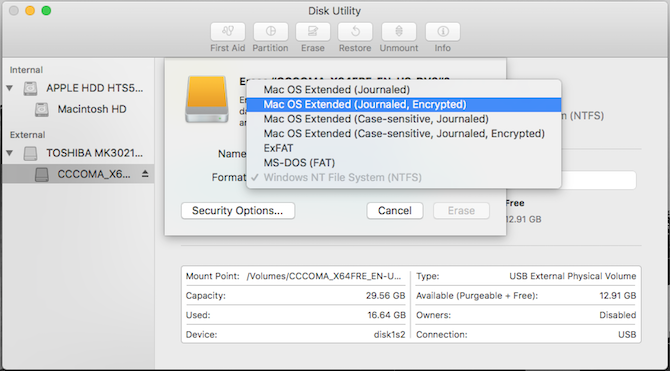Click Erase to finish. Your exFAT-formatted drive or partition can now be used for both Windows and Mac. Note that using a drive frequently between Windows and Mac could increase the chances. SDXC Memory Cards and 256GB CompactFlash cards are formatted natively in the exFAT file system. Flash Drives may also be formatted in exFAT. The operating system must support the exFAT file system in order for these devices to function properly. ExFAT Supported Operating Systems. The issue seems to be multifold. A thumb drive formated with exfat is being seen as FAT and not exfat by the Mac. Running first aid on the failed partition in Disk Utility fails with fsckmsdos being run. Running fsckexfat on the partition /dev/disk2s1 returns fine. Running it on the disk /dev/disk2 fails looking for the boot regions/signatures. ExFAT drives must be safely ejected to prevent corruption because ExFAT is not a journaled file system When using between macOS and Windows, drives should always be formatted on macOS because not all Windows allocation unit sizes (block sizes) are supported by macOS which will prevent the drive from mounting. You can convert 'FAT32' to 'exFAT' on Mac using the Disk utility option that it provides. In the disk utility, follow the below steps: Select the disk partition that you want to format from the list of disks displayed on the left pane of the interface.
Sep 08, 2021 • Filed to: Solve Mac Problems • Proven solutions
If your USB flash drive is not recognized by your Apple Mac computer because it has a different format it is kind of difficult to format it. You may not know how to format your USB flash drive to make it compatible with your Mac system but we do and will show you how to do it in this article.
Overview of Formatting USB Drive on Mac
Mac Systems have a different OS to Windows and this is where most of the problems like. Most USB flash drives on sale are designed to work with Windows operating systems that run on Fat32. Mac devices on the other hand run on either Mac OS Extended or APFS. If your drive is an APFS format or a Mac OS format you can format your drive easily but if it is a FAT32 format this may be a problem. If you have made the mistake of buying a flash drive they run on a FAT32 file format you don't have to discard it altogether. There are ways to format a flash drive that runs in a different format and we will show you steps to take to remedy the situation.

Step to Format a USB Drive to FAT32 on Your Mac
Exfat Download Mac Free
- Plug the drive into the Mac system
- Choose Applications- Utilities then Disk Utility
- From the sidebar pick USB drive
- From the toolbar select Erase
- Name the formatted disk and choose either ExFat or MS-DOS(FAT32) from the menu

- Select erase to format your drive depending on the selection you have picked (FAT32 or ExFAT)
Convert/Format USB Flash drive to FAT32 using Command Line
- Connect Flash drive to Mac
- Tap CMD and space bar to open Spotlight. Type 'terminal' and press Enter
- Type in :diskutill land locate your USB drive
- Type in sudo.diskutilerasediskFAT32MBRFormat/Dev/disk2
- Sudo will give you the user right
- Diskutill will call in the utility program
- Erasedisk commands will format
- FAT32 will set the file system
- MBRFormat will tell the disk to format with Master Boot
- /Dev/disk2 will be the USB drive location
You will have to wait a while for the format to be completed. Type in : diskutill to check if the process was successful.
If you follow these steps religiously you should be able to resolve the issue quickly. If you're searching for a way that helps you recover formatted USB drive on Mac, download Recoverit Data Recovery software and go to the page telling you how to restore the formatted hard drive.
Video Tutorial on How to Format a USB Flash Drive on Mac
What's Wrong with Mac
Exfat Download Mac
- Recover Your Mac
- Fix Your Mac
- Delete Your Mac
- Learn Mac Hacks